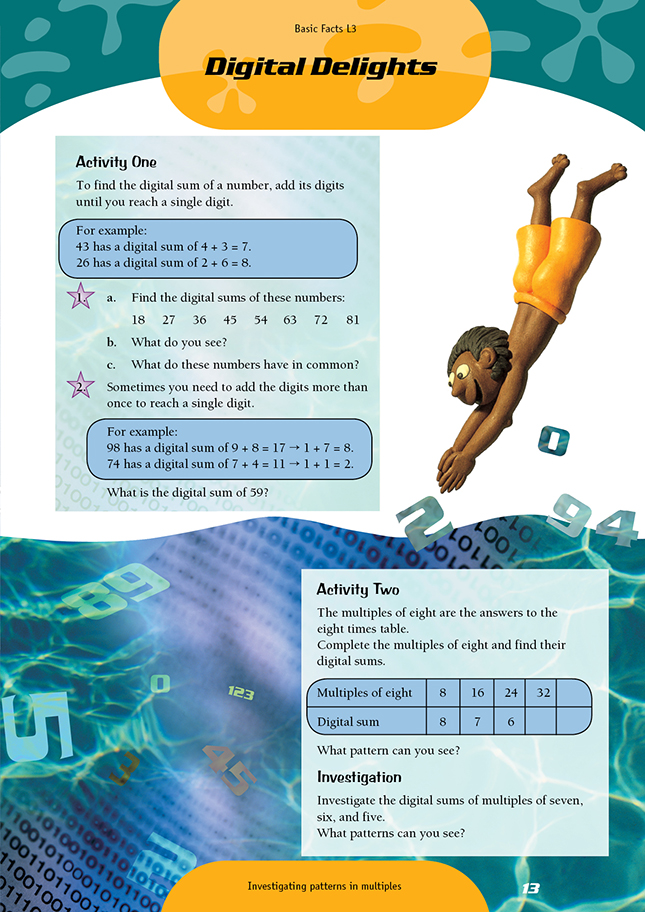This is a level 3 number activity from the Figure It Out series. It relates to Stage 6 of the Number Framework.
Click on the image to enlarge it. Click again to close. Download PDF (99 KB)
investigate patterns in multiples
FIO, Level 3, Basic Facts, Digital Delights, page 13
Activity One
This activity encourages students to recognise that any multiple of nine has a digital sum of nine.
As an extension, you could ask students to work in pairs and give them large numbers to check to see whether they are multiples of nine.
Activity Two
Students can explore patterns of multiples for eight, seven, six, and five.
Multiples can be generated very quickly on the calculator if students activate the constant function. This is done on most calculators by keying in the number that students want to find multiples of and then pressing followed by
to generate the set of multiples, for example,
It is also interesting to include multiples of three and the corresponding digital sum. Every multiple of three has a digital sum that is a multiple of three, that is, three, six, or nine. To find out whether a number is a multiple of three, calculate its digital sum and see whether that is a multiple of three.
Answers to Activities
Activity One
1. a. 9 9 9 9 9 9 9 9
b. All the numbers have the same digital sum, 9.
c. Answers will vary but could include: They are all multiples of 9.
2. 59 has a digital sum of 5 + 9 = 14 → 1 + 4 = 5
Activity Two
A possible explanation of the pattern is: A number sequence starting with 8
and decreasing by 1. The sequence goes back to 9 after 1 is reached.
Investigation
Answers will vary but could include the following explanations with the completed multiples:
The pattern is either odd or even numbers, decreasing by 2.
The pattern is 3 repeated multiples of 3: 9, 6, 3.
The pattern is based on – 4 in increasing pairs or on + 1 in alternate pairs.




